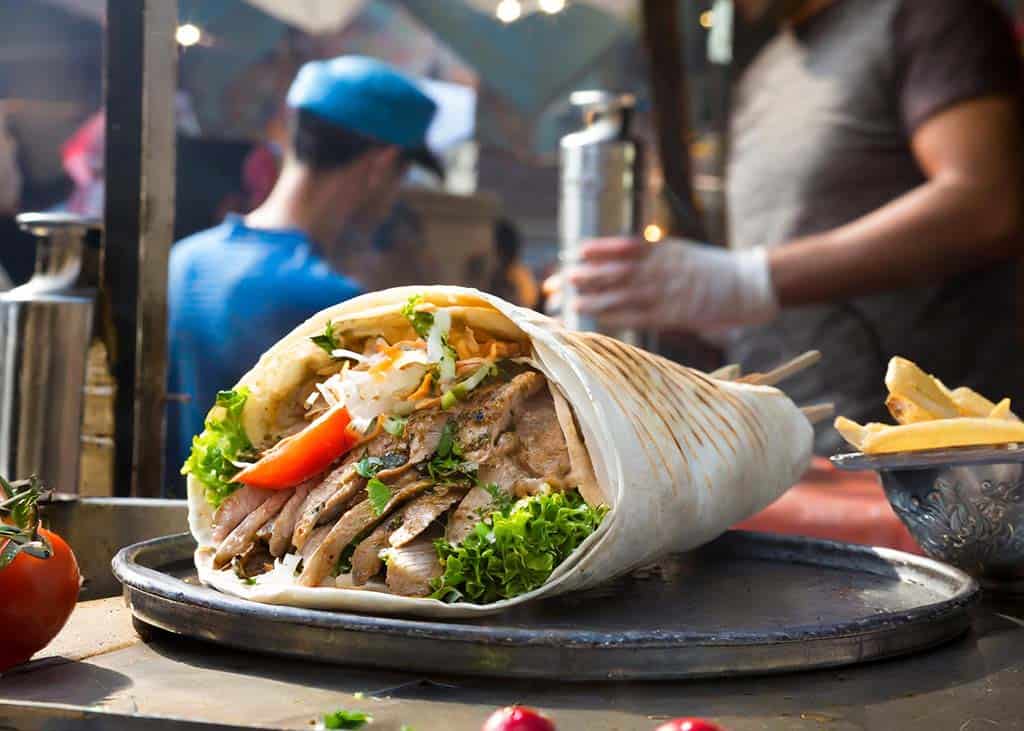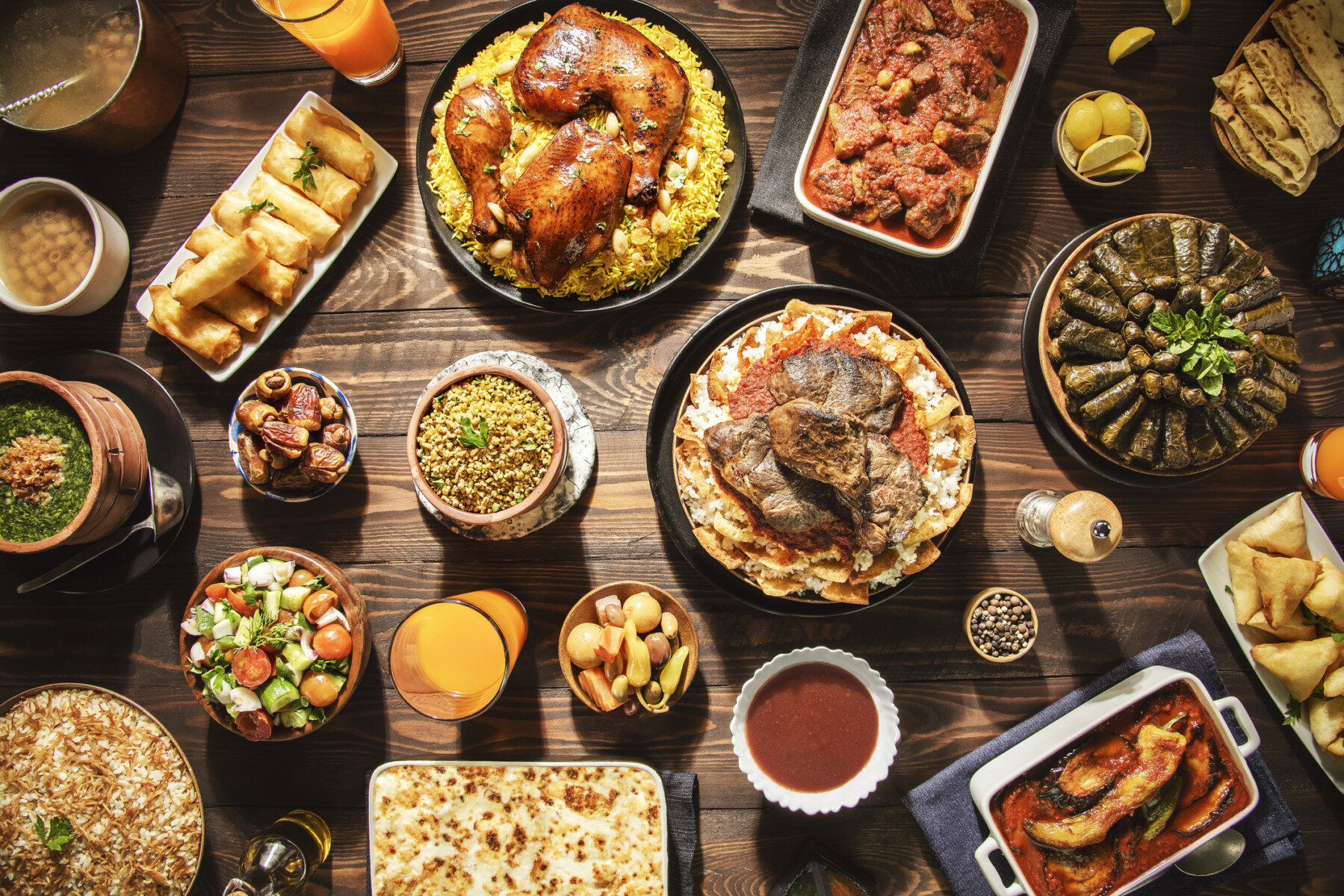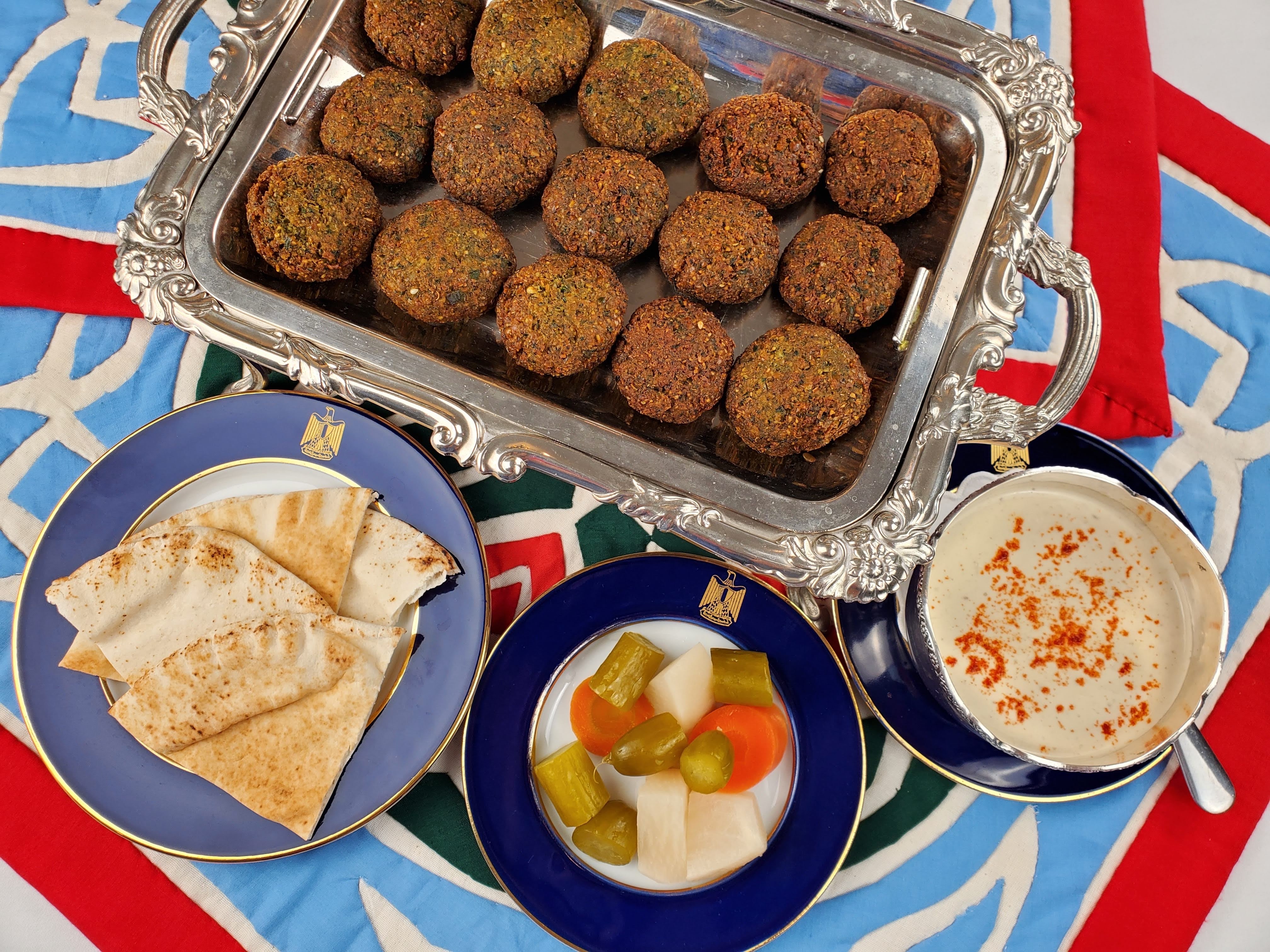Savouring the Flavours of Egypt: A Culinary Adventure for Aussie Travellers

Introduction
Overview of Egyptian Cuisine
Egyptian cuisine is a vibrant tapestry woven from thousands of years of history, diverse cultural influences, and an abundance of fresh, local ingredients. Whether you're exploring the bustling streets of Cairo or dining in a cosy rural eatery, the food captures the essence of Egypt's heritage.
Imagine sitting down to a plate of Koshari, a beloved national dish made with rice, lentils, and pasta, topped with a spicy tomato sauce and garlicky vinegar. This concert of flavours, textures, and aromas is what makes Egyptian food so special. Some key influences on this cuisine include:
- Historical Roots: Ancient Egyptian practices and ingredients still resonate in modern dishes.
- Mediterranean Touch: The geographical placement of Egypt allows for an infusion of Mediterranean flavours.
- Rich Spices: Spices like cumin, coriander, and cinnamon provide depth and warmth to many dishes.
Growing Popularity of Culinary Tourism
Culinary tourism in Egypt has been on the rise, attracting food lovers from around the globe who are eager to indulge in authentic flavours. More travellers now realise the potential of food as a window into a culture. Consider these benefits of culinary tourism:
- Cultural Engagement: A deeper understanding of Egyptian traditions through food.
- Unique Experiences: Opportunities to learn cooking styles and techniques first-hand.
- Local Interaction: Connecting with local chefs and home cooks adds personal stories to meals.
With an array of traditional markets, street vendors, and gourmet restaurants, culinary tourism in Egypt is sure to delight every palate. Embrace the flavours and let your taste buds embark on an unforgettable journey!

Traditional Egyptian Dishes
Koshari and Ful Medames
When delving into traditional Egyptian dishes, Koshari is surely the star of the show. This hearty, vegetarian meal combines pasta, rice, lentils, and chickpeas, all generously topped with a spiced tomato sauce and crispy fried onions. Picture a bustling street food stall where the aroma of Koshari fills the air, and locals line up for a taste of this satisfying meal. It's more than just food; it's a symbol of Egypt’s rich culinary history.
On the other hand, we have Ful Medames, a dish that has stood the test of time. This hearty fava bean stew is often enjoyed for breakfast, served with olive oil, garlic, and lemon. You might find it served alongside fresh, warm pita bread, making it an ideal start to the day. Here are some key highlights of these dishes:
- Koshari: Often garnished with a splash of vinegar and some chilli for an extra kick.
- Ful Medames: Frequently enjoyed with a drizzle of tahini, giving it a creamy finish.
Ta'meya and Mulukhiyah
Next on our culinary journey are Ta'meya and Mulukhiyah. Ta'meya, Egypt's version of falafel, is made from ground fava beans rather than chickpeas. These crispy patties are deep-fried to golden perfection, often served in a warm pita with fresh vegetables and tahini sauce. You’ll find locals munching on them during breakfast, embodying instant joy in a bite. Mulukhiyah, on the flip side, is a beloved green soup made from jute leaves.
Known for its unique, silky texture, it's usually served over rice or with bread. The flavours are often enhanced with garlic and coriander, making it comfort food at its finest. Exploring these traditional dishes not only tantalizes your taste buds but also offers a glimpse into the heart of Egyptian culture—where every meal is a story waiting to be told!

Popular Egyptian Street Foods
Hawawshi and Shawarma
As we wander the lively streets of Egypt, the enticing aroma of street food beckons. Two all-time favourites capturing the hearts (and stomachs) of locals and visitors alike are Hawawshi and Shawarma. Starting with Hawawshi, this delicious dish is essentially a pastry filled with spiced minced meat, typically beef or lamb, enveloped in a deliciously crispy, baked pita.
Picture yourself biting into a warm, flaky crust, with the juicy, seasoned meat mingling with fresh herbs and spices. Street vendors often sell them, making them a perfect snack to enjoy on the go. Here are some traits of Hawawshi:
- Savoury Flavours: Spices such as cumin and coriander elevate the taste.
- Accompanied by Sauce: Sometimes served with a side of spicy dipping sauce for an extra kick.
Next up is the ever-popular Shawarma. Originating from the Levantine region, this iconic dish consists of marinated meat that’s slow-cooked on a vertical rotisserie. Served in a fluffy pita with an assortment of toppings, like pickles, garlic sauce, and fresh vegetables, Shawarma is a street food staple adored by many for its convenience and rich flavours.
Basbousa and Luqaimat
Of course, a journey through Egyptian street food wouldn’t be complete without sweet treats! Let's dive into Basbousa and Luqaimat, both of which tantalize your taste buds with their delightful flavours. Basbousa, a semolina cake soaked in sugar syrup, is a popular dessert often decorated with almonds. The soft, moist texture makes it hard to resist – often tempting you to reach for just one more piece!
- Syrupy Goodness: The syrup can be flavoured with rose water or orange blossom, giving it an aromatic twist.
- Serve with Coffee: Perfectly complemented by a strong cup of Egyptian coffee.
Meanwhile, Luqaimat are fluffy, golden dumplings drizzled with syrup or honey and often sprinkled with sesame seeds. These sweet, doughy delights are perfect for satisfying any sweet tooth.
- Crispy on the Outside: The contrast of textures makes them addictive!
- A Popular Snack: You’ll often spot vendors frying them up in stalls, calling out to passersby.
These street foods create a sensory experience, illustrating the warmth and hospitality that Egyptian culture is known for. From savoury to sweet, there's something to please every palate!

Experiencing Egyptian Tea and Coffee Culture
Importance of Tea in Egyptian Society
As you immerse yourself in the vibrant streets of Egypt, you’ll quickly realise that the tea culture is woven into the very fabric of daily life. Tea is not just a beverage; it’s a social ritual that brings people together. From bustling cafes to homes, you'll find families and friends gathering over steaming cups of sweetened tea, often flavoured with mint or black tea. Consider these facets that highlight tea's prominence in Egyptian society:
- Welcoming Gesture: Offering tea is a way to express hospitality. Visitors can expect to be served tea upon arriving at a friend's home.
- Socialising: It's common for Egyptians to pause their busy lives for a moment’s chat over a cup of tea, giving rise to connections and camaraderie.
- Cultural Events: Tea plays a vital role during celebrations and gatherings, adding a sense of culture and warmth to special moments.
Unique Coffee Blends in Egypt
While tea reigns supreme, Egyptian coffee deserves its spotlight, too. Egyptian coffee is strong, aromatic, and often prepared using traditional methods. This coffee is typically brewed in a long-handled pot known as a cezve and served in small cups. Here’s what makes Egyptian coffee unique:
- Spicing it Up: Many enjoy their coffee with spices like cardamom, enhancing its rich flavour.
- Coffee Culture: Similar to tea, coffee drinking is a social affair, often enjoyed in cafes that serve as social hubs where friends gather to relax and converse.
- Variations: You can find different styles, like Ahwa Bil-Halib (coffee with milk) or Turkish-style coffee, adapting flavours to local tastes.
In embracing the tea and coffee culture, you not only enjoy delightful beverages but also partake in a cherished tradition that celebrates togetherness and community. So, as you explore Egypt, don’t forget to sip on a cup of tea or coffee and bask in the warmth of its hospitality!

Regional Variations in Egyptian Cuisine
Coastal Delicacies from Alexandria
As you continue to explore Egypt’s diverse culinary landscape, you cannot overlook the coastal city of Alexandria. This bustling Mediterranean hub is renowned for its fresh seafood and unique flavour combinations, heavily influenced by its proximity to the sea.
Here, the local cuisine reflects a fusion of Egyptian traditions and Mediterranean practices. Imagine strolling along the Alexandria corniche, where you’ll find stalls serving up mouth-watering dishes such as grilled calamari and shrimp marinated in garlic, lemon, and spicy chilli. Not to mention the famous Alexandrian fish, often seasoned with a blend of spices for a burst of flavour. Key highlights from coastal delicacies include:
- Seafood Richness: From foul medames to tahini, the dishes focus heavily on fresh ingredients.
- Mezze Culture: Small plates like stuffed vine leaves and various dips are commonly enjoyed.
Flavours of Upper Egypt in Luxor
Travel further south to Luxor, and you will discover a distinct culinary style that celebrates the rich agricultural heritage of Upper Egypt. Here, the dishes often feature hearty ingredients and reflective cooking techniques. Luxor is known for its delicious molehiya, a nutritious green soup made from jute leaves, which is typically served with rice or bread. Additionally, options like hizana (a type of grain dish) showcase the region's agricultural bounty. Notable aspects include:
- Focus on Grains: The use of local grains and legumes is prevalent, providing hearty and satisfying meals.
- Heritage Recipes: Traditional family recipes are often passed down through generations, preserving the essence of Upper Egyptian cuisine.
Exploring the culinary variations between Alexandria and Luxor offers a deeper understanding of the regional influences shaping Egyptian food culture. Each locale brings its own unique flavours and traditions to the table, making for an exciting gastronomic journey across the country
Culinary Workshops and Cooking Classes
Learning the Art of Mezze Preparation
As you delve deeper into Egyptian cuisine, participating in culinary workshops and cooking classes is an unforgettable way to immerse yourself in this rich culture. One popular topic among eager food enthusiasts is mezze preparation. Imagine stepping into a warm kitchen, the aroma of spices wafting through the air.
Mezze platters are a staple in Egyptian dining, featuring an assortment of small dishes designed to be shared. In a hands-on cooking class, you can learn to create classics like hummus, baba ghanoush, and stuffed grape leaves. Key elements of a mezze workshop include:
- Variety of Dishes: You’ll explore different textures and flavours, combining fresh ingredients.
- Cultural Insights: Discussions often highlight the significance of each dish in Egyptian gatherings.
- Skill Development: Learn knife skills and presentation techniques to make your mezze visually appealing.
Mastering the Techniques of Baking Egyptian Bread
Another essential aspect of Egyptian cooking is baking bread. Egyptian bread, often known as baladi or flatbread, serves as a versatile accompaniment to meals. In a dedicated bread-making class, you can transform simple ingredients into aromatic loaves. Picture yourself kneading dough guided by an experienced local baker. Critical lessons often featured in these workshops include:
- Traditional Methods: Learning the time-honoured techniques of preparing and baking bread in clay ovens.
- Variations: Discover different types of Egyptian bread, from soft pita to crispy khameer.
- Culinary Bonding: Baking together fosters connections and friendship among participants, all while sharing stories.
Engaging in culinary workshops not only equips you with invaluable skills but also opens the door to the heart of Egyptian culture, where food is a beloved form of expression and community. By learning these techniques, you’ll take a piece of Egypt home with you, ready to pass on the tradition to friends and family!

The Significance of Spices and Ingredients
Exploring Aromatic Spices like Cumin and Coriander
As you continue your culinary adventure through Egyptian cuisine, the role of spices and ingredients cannot be overstated. A blend of aromatic spices like cumin and coriander is essential in bringing depth and richness to many traditional dishes.
Imagine walking through bustling spice markets, where the air is fragrant with the smell of warm, earthy spices. Cumin, with its nutty flavour, is a cornerstone in Egyptian cooking—perfect for enhancing dishes like koshari. Similarly, coriander imparts a subtle citrusy note, often found in marinades and dressings. Let's consider some key points:
- Culinary Versatility: Both spices can be used in various forms—whole seeds, ground, or as part of spice blends.
- Health Benefits: Cumin and coriander boast numerous health properties, such as aiding digestion and possessing anti-inflammatory effects.
Using Fresh Produce like Eggplant and Okra
Equally important in Egyptian cuisine are the fresh vegetables that light up the plates with vibrant colours and flavours. Vegetables like eggplant and okra are popular choices and are prominently featured in various dishes. Picture a bustling kitchen where thick, smokey-flavoured baba ghanoush made from roasted eggplant is prepared or the classic Egyptian stew known as mulukhiyah, where tender okra adds a unique texture. Here's why these vegetables shine in Egyptian cooking:
- Seasonal Availability: Fresh produce reflects the local agricultural bounty, with many dishes tailored to the seasons.
- Culinary Heritage: Ingredients like eggplant and okra have rich histories and are often used in cherished family recipes.
Understanding the significance of spices and fresh ingredients not only enhances your cooking skills but also helps you appreciate the flavours that make Egyptian cuisine so delightfully unique. With their aromatic profiles and fresh tastes, they form the very foundation upon which many unforgettable meals are built!
Dining Etiquette and Customs in Egypt
Traditional Eating Habits in Egyptian Culture
As you explore the culinary landscape of Egypt, understanding dining etiquette and customs offers a deeper insight into the culture surrounding food. Traditional eating habits are both inviting and rich in meaning.
In Egyptian culture, meals are often shared, reflecting a sense of community and hospitality. Imagine sitting down at a bustling family table where everyone shares a variety of dishes placed in the centre. Here are some key aspects of traditional eating:
- Use of Bread: Pita bread, or baladi, serves not only as an accompaniment but also as a utensil. Egyptians often use pieces of bread to scoop up food.
- Eating with the Right Hand: It's customary to use the right hand for eating, as the left hand is considered impolite in many cultures.
- Waiting for Guests: It’s common for hosts to wait for everyone to be seated before starting the meal, emphasising the value placed on togetherness.
Special Occasions and Festive Feasts
When it comes to special occasions, Egyptian feasts are a sight to behold. From weddings to religious holidays, these gatherings are marked by an abundance of food and joy. During festive occasions like Eid al-Fitr, families prepare lavish spreads filled with traditional dishes such as kebabs, stuffed pigeons, and sweet pastries. Some standout points include:
- Food as a Centrepiece: Meals often showcase elaborate dishes that are a point of pride for hosts.
- Celebratory Atmosphere: Music, laughter, and storytelling accompany meals, creating a warm and festive ambience.
- Generous Hospitality: Guests are often invited to take home leftovers, symbolising generosity and care.
Understanding dining etiquette and customs in Egypt not only enriches your culinary experience but also connects you with the heart of Egyptian culture. Every meal shared is a celebration of life, community, and the bonds that food creates!

Fusion of Egyptian and Australian Cuisines
Influence of Egyptian Dishes in Australian Restaurants
As globalisation continues to influence culinary experiences, the rich flavours of Egyptian cuisine have found a comfortable place in Australian restaurants. With a growing interest in diverse culinary traditions, many Australian chefs are incorporating traditional Egyptian dishes and techniques into their menus. Imagine walking into a trendy eatery that boasts an array of dishes inspired by the tastes of Egypt. Here are some ways Egyptian cuisine is making waves down under:
- Koshari Specials: Some Australian restaurants serve Koshari, enhancing it with local twists, like incorporating native ingredients or unique sauces.
- Falafel Reinvented: Traditional falafel is often featured on brunch menus, served alongside fresh salads and gourmet dips, showcasing a fusion of flavours.
- Events and Festivals: Egyptian food festivals in Australia celebrate cultural diversity, offering foods like shawarma and basbousa.
Australian Ingredients in Modern Egyptian Cooking
Conversely, Australian ingredients are also finding their way into contemporary Egyptian cooking. Chefs in Egypt are exploring innovative ways to blend local produce with traditional recipes, creating exciting new dishes. Throughout this culinary fusion, consider how Australian ingredients are enhancing Egyptian flavours:
- Fresh Seafood: With Australia's proximity to the coast, fresh fish and seafood are being incorporated into Egyptian dishes like stuffed fish or grilled seafood platters.
- Local Vegetables: Seasonal and organic produce from Australia, such as heirloom tomatoes or sweet potatoes, are enhancing Egyptian staple dishes, adding unique textures and flavours.
- Gourmet Twists: Traditional pastries may now be considered with Australian-inspired fillings such as lemon myrtle or native fruits.
This fascinating interplay between Egyptian and Australian cuisines not only bridges cultures but also invites food lovers to embark on a delicious culinary journey, highlighting the beauty of fusion cooking. Whether you’re in Cairo or Sydney, the flavours of both worlds come together to create something spectacular!
